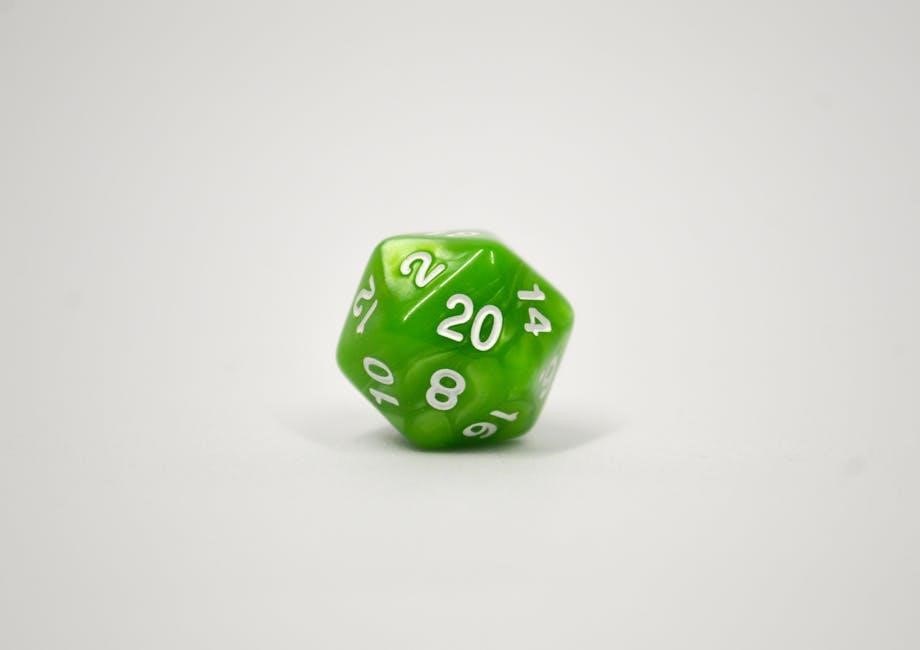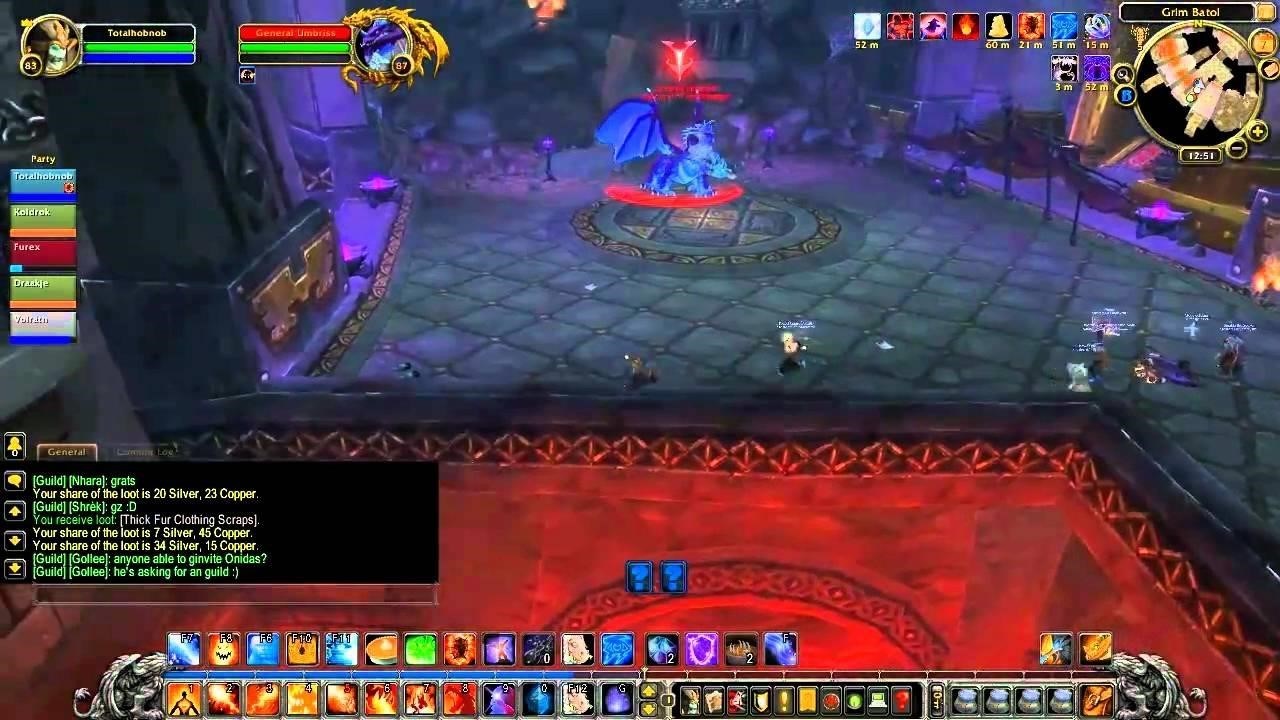The Dungeons & Dragons 3.5 Dungeon Masters Guide is a core rulebook essential for DMs, offering tools for world-building, magic items, NPCs, and more. Available as a PDF with errata on DriveThruRPG, it’s a cornerstone of the 3.5 Edition, enhancing gameplay and storytelling.
1.1 Overview of the DMG and Its Importance
The Dungeon Masters Guide is a cornerstone of the D&D 3.5 Edition, serving as the primary resource for Dungeon Masters. It contains essential tools for world-building, magic item creation, NPC design, and managing game mechanics. Available as a downloadable PDF with errata, the DMG is indispensable for crafting immersive stories and balancing gameplay. It provides detailed guidelines for referees, ensuring smooth and engaging adventures. This guide is a must-have for both new and experienced DMs, offering comprehensive support to enhance the D&D experience.
1.2 Role of the Dungeon Master in D&D 3.5
The Dungeon Master (DM) is the architect of the D&D 3.5 Edition experience, responsible for creating and narrating adventures, controlling NPCs, and adjudicating rules. They craft detailed worlds, balance encounters, and ensure engaging gameplay. The DM serves as both storyteller and referee, guiding players through immersive stories while maintaining game mechanics. This role requires creativity, improvisation, and a deep understanding of the game’s rules and setting. The DMG provides essential tools to help DMs fulfill this critical role effectively.
1.3 Key Features of the 3.5 Edition DMG
The 3.5 Edition DMG offers comprehensive tools for DMs, including detailed world-building guidelines, crafting systems for magic items, and strategies for balancing encounters. It provides extensive rules for creating NPCs, monsters, and custom adventures, along with optional rules for epic-level play and psionics. The guide also includes errata for clarity and improved gameplay. Available as a PDF on platforms like DriveThruRPG, it remains a vital resource for enhancing and personalizing D&D campaigns, ensuring versatility and depth for both new and experienced DMs.

Structure and Content of the 3.5 Dungeon Masters Guide
The 3.5 DMG is a 320-page PDF organized into clear chapters, offering detailed rules for world-building, magic, NPCs, and monsters. It includes core mechanics and optional rules.
2.1 Chapter Breakdown and Organization
The Dungeon Masters Guide 3.5 is structured into clear, thematic chapters, each focusing on key aspects of DM responsibilities. Chapters cover world-building, magic items, NPCs, monsters, and advanced rules. The guide begins with foundational concepts, progressing to detailed mechanics and optional systems. Its logical flow helps DMs navigate topics like creating custom settings, balancing encounters, and managing treasure. Available as a 320-page PDF with errata, it ensures accessibility and ease of use for crafting immersive D&D experiences.
2.2 Core Rules and Mechanics for Dungeon Masters
The Dungeon Masters Guide 3.5 provides essential rules and mechanics for DMs to manage gameplay, including world-building, encounter design, and magic item creation. It details how to craft engaging stories, balance challenges, and oversee player interactions. The guide also covers advanced topics like epic-level play and optional rules, ensuring flexibility for custom campaigns. With clear organization and comprehensive errata, it serves as a fundamental resource for both new and experienced DMs, enhancing their ability to create immersive and dynamic D&D experiences.
2.3 Evolution from Previous Editions
The 3.5 Edition Dungeon Masters Guide builds upon the foundation of earlier editions, incorporating feedback from players and DMs. It refines rules for character creation, spellcasting, and combat mechanics, ensuring greater balance and clarity. The d20 System is fully integrated, providing a unified framework for gameplay. This edition also expands on customization options, such as feats and prestige classes, enhancing player and DM flexibility. The 3.5 DMG solidified its place as a cornerstone of the D&D 3.5 Edition, improving upon its predecessors while maintaining the game’s timeless appeal.

World-Building and Adventure Design
The Dungeon Masters Guide provides essential tools for world-building and adventure design, helping DMs create immersive settings and engaging quests for their players;
3.1 Creating Custom Campaign Settings
The Dungeon Masters Guide offers extensive tools for crafting custom campaign settings, enabling DMs to build unique worlds tailored to their stories. From designing districts and locations to shaping lore and history, the guide provides detailed frameworks. DMs can customize environments, cultures, and plot hooks, ensuring each setting is distinct and immersive. With tips on integrating magic, monsters, and NPCs, the DMG empowers creators to construct vibrant, player-engaging worlds. These resources help both novice and veteran DMs bring their imaginative campaign visions to life.
3.2 Designing Engaging Adventures and Quests
The Dungeon Masters Guide provides detailed frameworks for designing engaging adventures and quests, ensuring immersive and dynamic gameplay. DMs can craft compelling storylines, incorporate meaningful NPC interactions, and create challenging encounters tailored to their players. The guide offers tools for balancing difficulty, structuring plot hooks, and integrating player choices. These resources help DMs build adventures that captivate players, fostering creativity and engagement. Whether for novice or experienced DMs, the DMG equips them to create memorable and rewarding quests.
3.3 Balancing Encounter Difficulty
The Dungeon Masters Guide offers comprehensive tools for balancing encounter difficulty, ensuring challenges are neither too easy nor too hard. DMs can use Challenge Ratings (CR) to assess monster strengths and tailor encounters to party levels. Adjustments for environmental factors, party size, and treasure distribution are also provided. These guidelines help create balanced, engaging combat scenarios, keeping players challenged but not overwhelmed. The DMG ensures encounters are dynamic and strategically rewarding, enhancing overall gameplay satisfaction.

Magic Items and Treasure Management
The Dungeon Masters Guide provides essential tools for managing magic items and treasure, including crafting rules, distribution guidelines, and strategies for balancing powerful artifacts in your campaign.
4.1 Crafting and Customizing Magic Items
The Dungeon Masters Guide provides detailed rules for crafting and customizing magic items, allowing DMs to create unique treasures tailored to their campaigns. From specifying prerequisites to calculating experience costs, the guide offers flexible frameworks for balancing powerful artifacts. This section enhances storytelling by enabling the creation of items with rich histories and specific functionalities, ensuring magic items integrate seamlessly into the game world while maintaining gameplay balance.
4.2 Managing Treasure Distribution
The Dungeon Masters Guide offers comprehensive guidelines for managing treasure distribution, ensuring balanced and engaging rewards for players. It provides frameworks for determining appropriate treasure based on party level, encounter difficulty, and campaign themes. DMs can use these tools to create meaningful rewards that enhance storytelling while maintaining game balance. The guide also includes methods for customizing treasure to fit specific adventures, ensuring that loot distribution remains fair and exciting for all players. This section is essential for crafting rewarding experiences tailored to any campaign.
4.3 Artifacts and Legendary Items
The Dungeon Masters Guide details the creation and integration of artifacts and legendary items, which are powerful tools that shape the game’s narrative. These items often hold unique properties and historical significance, setting them apart from standard magic items. The guide provides examples and frameworks for crafting these relics, ensuring they are balanced yet impactful. Artifacts can drive plotlines or serve as epic rewards, enriching the campaign world and offering players memorable experiences. Their inclusion is carefully guided to maintain game equilibrium while enhancing storytelling depth.

Non-Player Characters (NPCs) and Monsters
The Dungeon Masters Guide provides extensive resources for creating memorable NPCs and designing complex monsters. These elements enrich the game’s narrative and enhance encounters, offering depth and variety.
5.1 Designing Memorable NPCs
The Dungeon Masters Guide offers detailed guidance on crafting memorable NPCs, from unique personalities to complex backstories. These non-player characters are essential for enriching the game world, driving plotlines, and engaging players emotionally. The guide provides tips for creating believable motivations, distinct voices, and meaningful interactions, ensuring NPCs feel like living entities within the campaign. This section empowers DMs to build characters that leave lasting impressions, enhancing the depth and immersion of the game.
5.2 Advanced Monster Creation and Tactics
The Dungeon Masters Guide provides comprehensive tools for advanced monster creation, allowing DMs to craft unique creatures tailored to their campaigns. It includes guidelines for customizing stats, abilities, and traits, ensuring monsters are both challenging and thematic. The guide also offers tactical strategies for encounters, helping DMs create dynamic combat scenarios. By balancing monster strengths with party capabilities, DMs can design battles that are engaging, unpredictable, and memorable, elevating the gameplay experience for players. This section is a must for creating compelling adversaries.
5.3 Using Monsters from the Monster Manual
The Dungeon Masters Guide complements the Monster Manual by providing strategies to effectively use its creatures in campaigns. DMs can customize monster stats, abilities, and behaviors to fit specific scenarios, ensuring encounters remain dynamic and engaging. The guide offers tips on scaling monsters to party levels and adapting them to different campaign settings. This synergy between the DMG and Monster Manual enhances gameplay, allowing DMs to craft memorable and balanced encounters that challenge players in unique ways while maintaining immersion and fun.

Combat Mechanics and Problem-Solving
The DMG provides advanced combat tactics, tools for managing complex encounters, and strategies for resolving disputes, ensuring dynamic and balanced battles in your campaign.
6.1 Advanced Combat Tactics for DMs
The Dungeon Masters Guide offers detailed strategies for managing battles, including optimized enemy AI, terrain utilization, and dynamic challenge balancing. It provides tools to create immersive combat scenarios, ensuring encounters are engaging yet fair. DMs can leverage these tactics to craft memorable fights, enhancing player immersion. The guide also includes optional rules for refining combat mechanics, allowing DMs to tailor battles to their campaign’s tone. Available as a PDF, it’s an indispensable resource for refining combat encounters in D&D 3.5.
6.2 Managing Complex Combat Encounters
The Dungeon Masters Guide provides robust tools for handling intricate battles, ensuring dynamic and balanced encounters. It offers strategies for managing multiple enemies, complex terrain, and varied player abilities. DMs can use these guidelines to maintain game balance while keeping combat engaging. The guide emphasizes flexibility, allowing DMs to adapt encounters to their party’s strengths and weaknesses. Available as a PDF, it’s a concise yet comprehensive resource for mastering intricate combat scenarios in D&D 3.5.
6.3 Resolving Disputes and Rulings
The Dungeon Masters Guide offers clear guidelines for resolving in-game disputes and making fair rulings. It provides tools for interpreting ambiguous rules and mediating player conflicts. DMs can use optional rules and modifiers to customize outcomes while maintaining game balance. The guide emphasizes consistency and transparency, ensuring players feel heard and the game remains enjoyable for everyone. Available as a PDF, it equips DMs with the confidence to handle any situation, keeping the game flowing smoothly.

Character Customization and Development
The Dungeon Masters Guide provides tools for enhancing character customization, from prestige classes to feats, ensuring players can craft unique and dynamic characters.
7.1 Working with Players on Character Builds
The Dungeon Masters Guide emphasizes collaboration between DMs and players to craft unique characters. It offers tools like prestige classes, feats, and skill combinations to enhance customization. By guiding players through the rules, DMs ensure balanced and creative builds. The DMG also provides tips for integrating player ideas into the game world, fostering engagement and ownership. This collaborative approach ensures characters are both mechanically viable and narratively compelling, enriching the overall campaign experience. The 3.5 Edition DMG is a vital resource for tailoring character development to individual playstyles.
7;2 Handling Character Progression
The Dungeon Masters Guide provides detailed guidance on managing character advancement, ensuring balanced growth and engagement. It includes rules for experience points, level progression, and ability score improvements. DMs can use these tools to tailor advancement to the campaign’s pace, keeping players invested. The DMG also offers tips for handling treasure, feats, and prestige classes, ensuring characters evolve meaningfully without overshadowing others. This section helps DMs maintain a dynamic and balanced progression system, enhancing the overall gaming experience for all players.
7.3 Integrating Prestige Classes
The Dungeon Masters Guide offers comprehensive guidance on integrating prestige classes into campaigns, providing detailed prerequisites and progression charts. These specialized classes add depth to characters, offering unique abilities and playstyles. DMs can use the DMG’s guidelines to ensure prestige classes are balanced and accessible, enhancing both storytelling and gameplay. This section helps DMs manage complex class interactions, making prestige classes a rewarding option for players seeking distinct character development and mechanical variety in their D&D 3.5 campaigns.

The Role of the DMG in the D&D 3.5 Edition
The Dungeon Masters Guide is a core rulebook essential alongside the Player’s Handbook and Monster Manual. It provides DMs with tools for creating adventures, managing NPCs, and crafting magic items, serving as the cornerstone for shaping immersive D&D 3.5 Edition campaigns.
8.1 Relationship with the Player’s Handbook
The Dungeon Masters Guide (DMG) and the Player’s Handbook (PHB) are complementary core rulebooks in D&D 3.5 Edition. While the PHB focuses on player-facing rules, character creation, and class abilities, the DMG provides tools for world-building, NPCs, and game mechanics from the DM’s perspective. Together, they form the foundation of the game, ensuring balance and consistency. The DMG enhances the PHB by offering resources for crafting adventures, managing treasure, and creating immersive experiences, while the PHB ensures players have clear guidelines for character development.
8.2 Synergy with the Monster Manual
The Dungeon Masters Guide (DMG) and the Monster Manual are designed to work in tandem, providing a seamless experience for DMs. While the Monster Manual offers detailed stat blocks and descriptions for creatures, the DMG includes rules and guidelines for integrating these monsters into encounters, adventures, and campaigns. Together, they enable DMs to create balanced and engaging combat scenarios, enhancing the overall gameplay experience. This synergy ensures that monsters are not just adversaries but integral elements of the story and world-building process.
8.3 Importance of the DMG in Campaign Settings
The Dungeon Masters Guide (DMG) is indispensable for crafting immersive campaign settings, offering tools to shape detailed worlds and dynamic adventures. It provides guidelines for creating custom environments, NPCs, and plot hooks, ensuring a rich narrative experience. The DMG’s resources, such as magic item creation and encounter balancing, help DMs tailor their campaigns to player preferences. Available as a PDF with errata on platforms like DriveThruRPG, it enhances gameplay and storytelling, making it a cornerstone of the 3.5 Edition for both new and veteran DMs.

Advanced Topics and Optional Rules
The DMG explores epic-level play, high-level campaigns, and optional rules, allowing DMs to customize gameplay. It includes psionics and magic variants, enhancing campaign depth and flexibility.
9.1 Epic Level Play and High-Level Campaigns
The DMG provides comprehensive rules for epic-level play, allowing characters to progress beyond 20th level. It introduces advanced progression for epic-tier characters, epic magic items, and epic monsters. Detailed guidelines help DMs manage the complexity of high-level campaigns, ensuring balance and engagement. Optional rules like epic boons and legacy weapons add depth, enabling epic storytelling and challenging encounters. These tools empower DMs to craft unforgettable high-stakes adventures, making the late game as rewarding as the early levels.
9.2 Incorporating Psionics and Magic Variants
The DMG offers extensive rules for integrating psionics and magic variants into campaigns. It provides psionic character classes, such as the psion and psychic warrior, and details on psionic powers. Additionally, magic variants like spell-like abilities and alternative spellcasting systems are explored. These options allow DMs to diversify gameplay, offering players unique abilities and strategies. The guide also includes balance tips to ensure psionics and magic variants enhance, rather than overshadow, traditional magic, providing a richer and more dynamic game experience.
9.3 Customizing Rules for Your Campaign
The DMG provides extensive guidance on customizing rules to fit unique campaign settings. DMs can adapt core mechanics, create homebrew content, or introduce variant systems to enhance gameplay. Optional rules for character creation, combat, and magic allow for tailored experiences. The guide emphasizes balance and playtesting to ensure customizations don’t disrupt game stability. This flexibility enables DMs to craft personalized stories and mechanics, fostering creativity and engagement while maintaining the game’s core integrity.

Legacy and Impact of the 3.5 Edition DMG
The 3.5 DMG’s legacy is profound, shaping later D&D editions with its comprehensive rules and inspiring countless campaigns. Its enduring popularity and influence solidify its role in RPG history.
10.1 Influence on Later Editions of D&D
The 3.5 Edition DMG significantly influenced later D&D editions, shaping core mechanics and world-building tools. Its detailed rules and customization options became a blueprint for future versions, including 4th and 5th Editions. The guide’s emphasis on character customization, balanced encounters, and narrative flexibility set a standard, inspiring improvements in subsequent releases. Its legacy is evident in how modern DMs continue to reference its content, ensuring its impact remains a cornerstone of D&D evolution. The PDF’s availability has further cemented its role as a timeless resource.
10.2 Community Reception and Popularity
The 3.5 Edition DMG remains a beloved resource among D&D enthusiasts, praised for its comprehensive content and versatility. Its PDF release on platforms like DriveThruRPG has made it widely accessible, with players and DMs alike celebrating its affordability and convenience. The guide’s detailed mechanics, customization options, and world-building tools have fostered a dedicated community. Its popularity endures, with many considering it a cornerstone of D&D 3.5 Edition, driving engagement and creativity for both new and veteran players. Its influence is evident in the active community and continued downloads.
10.3 Historical Significance in RPG Development
The 3.5 Edition DMG holds a pivotal place in RPG history, setting a new standard for game design and customization. Its detailed mechanics and flexibility influenced countless RPG systems, shaping the genre’s evolution. The guide’s emphasis on storytelling, world-building, and player agency became a benchmark for later editions. Its enduring popularity, even in PDF form, highlights its lasting impact. As a cornerstone of D&D 3.5, it remains a foundational resource, inspiring both veterans and newcomers in tabletop gaming. Its legacy continues to shape modern RPG design and innovation.



